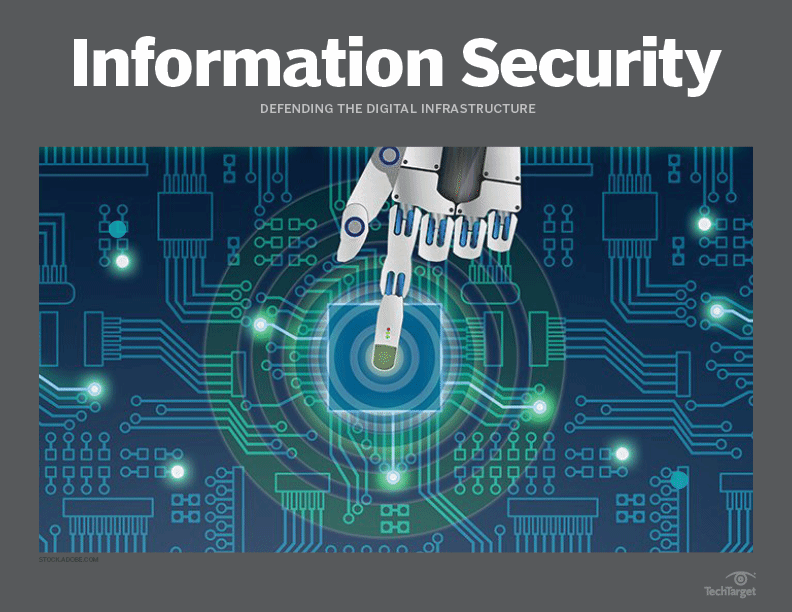New & Notable
Get Started
VM security in cloud computing explained
Cloud computing allows an organization to reduce its risks by having to secure fewer resources. The tradeoff is that cloud creates more attack vectors. Don't let VMs trip you up.
News
White House: Threats to critical infrastructure are 'severe'
While the White House released the new National Cybersecurity Strategy last year to help combat threats to critical infrastructure organizations, attacks have continued.
News
Microsoft touts expansion of Secure Future Initiative
At RSA Conference 2024, Microsoft vice president Vasu Jakkal discussed some of the criticisms leveled against the company and how the Secure Future Initiative will address them.
News
SentinelOne: Ransomware actors are adapting to EDR
At RSA Conference 2024, SentinelOne's Alex Samos discussed ongoing global threats such as ransomware and how threat actors are changing their techniques.
Trending Topics
-
Data Security & Privacy News
IBM study shows security for GenAI projects is an afterthought
IBM's survey of C-suite executives finds that 82% say trustworthy and secure AI are essential, but only 24% have a security component included in their GenAI projects.
-
Threats & Vulnerabilities Problem Solve
How to detect deepfakes manually and using AI
Deepfakes rely on AI to generate realistic but counterfeit content. A variety of automated tools and manual hints can help organizations pinpoint deepfake videos and images.
-
IAM Manage
How to configure sudo privilege and access control settings
Learn how to use the sudo command for access control configurations, from granting full administrative privileges to delegating roles.
-
Analytics & Automation News
Cisco details Splunk security integrations, AI developments
Just two months after Cisco completed its $28 billion acquisition of analytics giant Splunk, the company added XDR capabilities into Splunk Enterprise Security.
-
Network Security News
Change Healthcare breached via Citrix portal with no MFA
UnitedHealth Group CEO Andrew Witty's opening statement for Wednesday's congressional hearing shed more light on the ransomware attack against Change Healthcare.
-
Operations & Management News
Microsoft touts expansion of Secure Future Initiative
At RSA Conference 2024, Microsoft vice president Vasu Jakkal discussed some of the criticisms leveled against the company and how the Secure Future Initiative will address them.
Topics Covered
Application and platform security
Careers and certifications
Cloud security
Compliance
Data security and privacy
Identity and access management
Network security
Risk management
Security analytics and automation
Security operations and management
Threat detection and response
Threats and vulnerabilities
Find Solutions For Your Project
-
Evaluate
SSPM vs. CSPM: What's the difference?
Posture management in the cloud is key, but evaluating different tools, such as SaaS security posture management and cloud security posture management platforms, can be confusing.
-
AWS to protect its cloud using CrowdStrike security products
-
Security updates from Google Cloud Next '24 center on GenAI
-
RSAC 2024: Real-world cybersecurity uses for GenAI
-
-
Problem Solve
How to detect deepfakes manually and using AI
Deepfakes rely on AI to generate realistic but counterfeit content. A variety of automated tools and manual hints can help organizations pinpoint deepfake videos and images.
-
Top 11 cloud security challenges and how to combat them
-
How to conduct security patch validation and verification
-
Key software patch testing best practices
-
-
Manage
How to configure sudo privilege and access control settings
Learn how to use the sudo command for access control configurations, from granting full administrative privileges to delegating roles.
-
What is a cloud security engineer, and how do I become one?
-
How remote work is changing patch management
-
Navigating cloud patch management: Benefits, best practices
-
-
E-Handbook | July 2021
Mitigating risk-based vulnerability management challenges
Download -
E-Handbook | June 2021
Security observability tools step up threat detection, response
Download -
E-Handbook | January 2021
SolarWinds supply chain attack explained: Need-to-know info
Download -
E-Handbook | November 2020
Cyber insurance 101: Timely guidance on an essential tool
Download -
E-Zine | November 2020
AI cybersecurity raises analytics' accuracy, usability
Download
Information Security Basics
-
Get Started
What is a cloud security engineer, and how do I become one?
A cloud security engineer has specific responsibilities for helping to secure cloud infrastructure, applications and IT assets.
-
Get Started
SSPM vs. CSPM: What's the difference?
Posture management in the cloud is key, but evaluating different tools, such as SaaS security posture management and cloud security posture management platforms, can be confusing.
-
Get Started
risk-based vulnerability management (RBVM)
Risk-based vulnerability management (RBVM) is an approach to identifying and addressing security vulnerabilities in an organization's IT environment that prioritizes remediating vulnerabilities that pose the greatest risk.
Multimedia
-
News
View All -
Security operations and management
Microsoft touts expansion of Secure Future Initiative
At RSA Conference 2024, Microsoft vice president Vasu Jakkal discussed some of the criticisms leveled against the company and how the Secure Future Initiative will address them.
-
Threat detection and response
SentinelOne: Ransomware actors are adapting to EDR
At RSA Conference 2024, SentinelOne's Alex Samos discussed ongoing global threats such as ransomware and how threat actors are changing their techniques.
-
Threat detection and response
Authorities identify, sanction LockBit ransomware ringleader
After weeks of waiting, authorities in the U.S., the U.K. and Australia publicly identified 'LockBitSupp,' the mysterious operator behind the prolific LockBit ransomware gang.
Security Definitions
- risk-based vulnerability management (RBVM)
- cloud infrastructure entitlement management (CIEM)
- What is security information and event management (SIEM)?
- What is role-based access control (RBAC)?
- What is PCI DSS (Payment Card Industry Data Security Standard)?
- What is a SSL (secure sockets layer)?
- What is Data Encryption Standard (DES)?
- What is a potentially unwanted program (PUP)?











